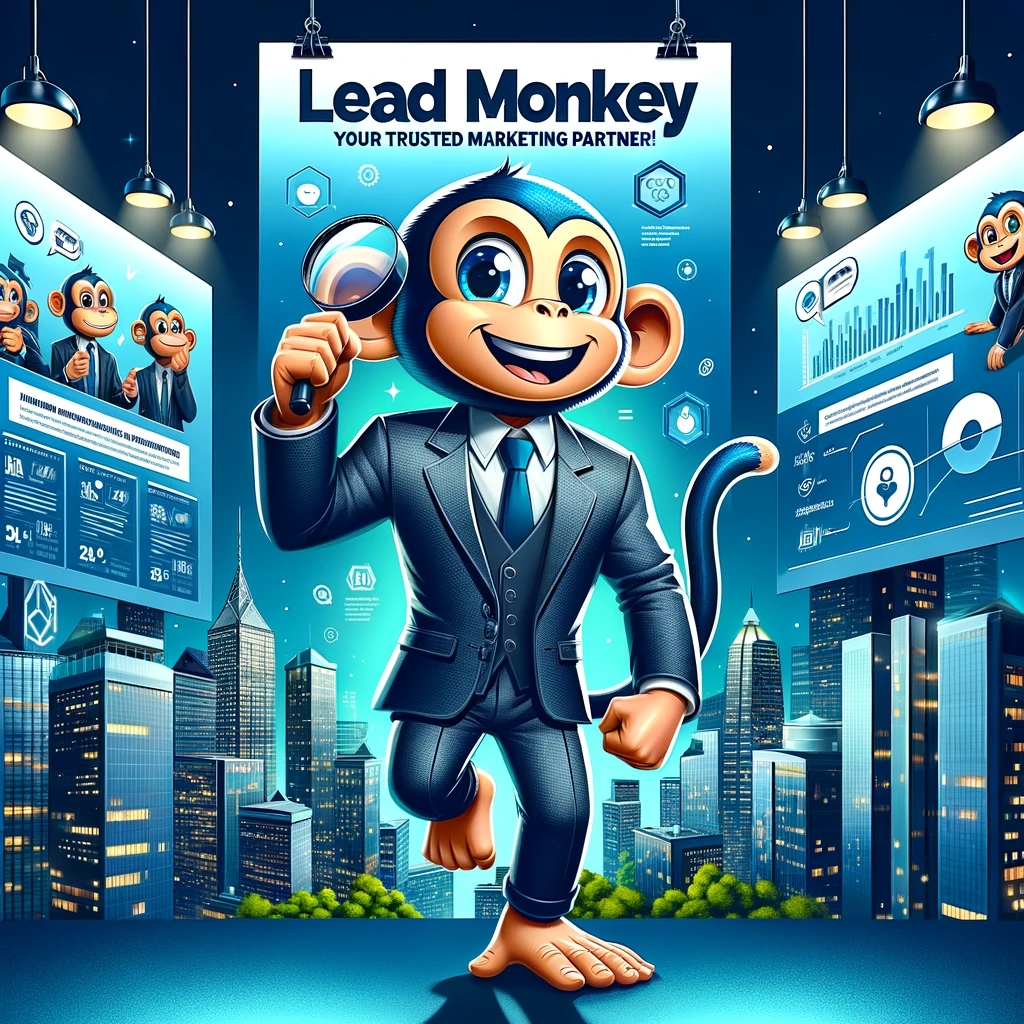Website Design in 2023: Crafting Digital Masterpieces with Cutting-Edge Tools and Principles
Introduction (approximate read time 20-25 minutes)
The digital world isn't just changing; it's metamorphosing at a pace that's exhilarating. As we journey through October 2023, the prominence of website design as an intricate blend of art and science becomes glaringly clear. This post delves into the latest trends in website design, shining a spotlight on the modern tools powering these trends and the enduring UX/UI principles that drive user engagement.
The Evolution of Design
The static websites of yore, characterized by their simplistic layouts and predominantly text-based content, have dramatically evolved, signaling a new era in the world of digital design. Today, when users venture onto the web, they don't just encounter sites; they embark on journeys. These journeys are made vibrant and engaging thanks to the continuous advancements in design technology and philosophy.
Modern design isn't confined to just what meets the eye. While aesthetics is still paramount, the broader goal now is to enthrall and engage. Websites today aim to captivate users, pulling them into an immersive story, a narrative that unfolds with each scroll, click, or swipe. This is where the concept of interactive storytelling comes into play. By weaving together compelling content with dynamic design elements, brands can narrate their tales in ways that resonate deeply with their audience.
Key technological advancements have fueled this design renaissance. Augmented reality (AR), for instance, is no longer the stuff of sci-fi dreams. With AR integrations, websites can bridge the gap between the virtual and real world, offering users experiences that are both novel and interactive. Parallax scrolling, on the other hand, supplies depth and movement to web pages, creating multi-dimensional visuals that react to user behavior. And then, there are fluid animations — subtle, yet impactful motion graphics that guide, inform, and delight users as they navigate through a site.
Such innovations are not mere gimmicks. They serve a dual purpose: enhancing user experience while effectively communicating a brand's message and identity. The resulting digital landscapes are vastly different from their static predecessors, offering interactive playgrounds that engage both the mind and the senses. In this new age of design, websites don't just inform; they enchant, turning every online interaction into a memorable experience.
Modern Tools Elevating Web Design
The dawn of the digital age brought with it a cascade of tools and platforms that have not only made web design more accessible but also more innovative and dynamic. Let's delve deeper into some of these game-changers in the web design industry:
Content Management Systems (CMS): Gone are the days when building a website required intricate coding knowledge. Today, with the advent of CMS platforms like WordPress, Wix, and Squarespace, even those without a technical background can create professional-grade websites. These platforms supply a plethora of customizable templates, plugins, and features, ensuring that designers have the freedom to innovate without being bogged down by technical limitations. More than just a design aid, CMS platforms also offer robust backend management, enabling easy content updates, user management, and site analytics, all from a single dashboard.
Graphic and UI Design Tools: As the demand for visually appealing and user-centric websites grows, tools like Adobe XD and Sketch have risen to prominence. These platforms offer designers a suite of features to create intuitive and aesthetic user interfaces. With functionalities ranging from wireframing to prototyping, designers can visualize, assess, and iterate designs with ease. Additionally, the collaborative features embedded in these tools foster real-time feedback and teamwork, streamlining the design process and ensuring consistency across design teams.
Animation & Motion: The static imagery of the past is gradually being overshadowed by the allure of motion and animation. Tools like GreenSock (GSAP) and Three.js have revolutionized this domain. Whether it's subtle hover animations, complex 3D graphics, or interactive storytelling elements, these platforms provide the toolkit for designers to infuse life into their creations. Animations, when done right, can elevate user engagement, making content more digestible and navigation more intuitive. They breathe life into websites, transforming them from static pages to dynamic digital stories.
In summation, the modern tools available to web designers today are not just about convenience; they're about elevating the art of web design itself. They allow for the fusion of creativity and technology, paving the way for websites that aren't just functional but are also artistic masterpieces.
Embracing a Mobile-First Ethos
In today's hyper-connected digital landscape, the mobile device has risen to prominence, serving as the primary gateway for countless individuals accessing the online world. With a sizable chunk of online traffic originating from smartphones and tablets, the importance of a mobile-centric web design strategy cannot be overstated.
The rise of the mobile-first ethos is not merely a response to this shift in user behavior; it's a proactive approach to design that places mobile interactions at the core. But what does this really entail?
To start, a mobile-first design strategy moves beyond mere responsive design. While ensuring that a website adjusts seamlessly across various screen sizes is crucial, the mobile-first paradigm delves deeper. It emphasizes the importance of intuitive navigation, streamlined content presentation, and touch-friendly interfaces. Given the limited real estate on mobile screens, every pixel and interaction matters. This means prioritizing essential content, optimizing images for faster load times, and creating touchpoints that are easily accessible by thumbs and fingers.
Furthermore, the mobile experience is deeply personal. Mobile devices are extensions of their users, always within arm's reach, going with them through various life moments. Recognizing this intimacy, a mobile-first design also focuses on creating personalized user experiences, using device features like location services, cameras, and gyroscopes to supply context-aware interactions.
Finally, embracing a mobile-first mindset means acknowledging and catering to the unique behaviors and expectations of mobile users. These users often seek quick answers, multitask, and have shorter attention spans. Optimizing for such behaviors might mean implementing accelerated mobile pages (AMP), creating bite-sized content, or designing for intermittent connectivity.
In essence, the mobile-first ethos is about crafting a holistic digital experience tailored for the mobile user. It's not about scaling down but about building up from a foundation that recognizes the nuances, challenges, and opportunities presented by mobile devices.
Delving into UX/UI: Crafting Seamless Experiences
In today's digital age, a user's experience with a product or service is often their first and most impactful interaction with a brand. This experience, driven by UX (User Experience) and UI (User Interface), plays a pivotal role in deciding a brand's success or failure online. Let's delve deeper into the intricate dance of UX/UI design:
The Pillars of UX: At its core, UX is about empathizing with the user and understanding their needs, motivations, and challenges. This necessitates a focus on the user's entire journey, from their first site visit to their eventual goals. Key components include:
- Easy Navigation: Users shouldn't have to hunt for information. A clear, intuitive navigation structure guides them effortlessly, enhancing their overall experience.
- Logical Flow: A well-thought-out progression ensures that users move seamlessly from one section or page to another, without feeling lost or overwhelmed.
- Reducing Cognitive Load: A site should be straightforward and intuitive. By minimizing distractions and presenting information in digestible chunks, designers can ensure users understand and engage with content with ease.
- UI: More Than Just Pretty Graphics: UI, while closely related to aesthetics, carries functional significance as well.
- Alignment with Brand Identity: Every visual element, be it an icon or a background color, should echo the brand's ethos, values, and messaging. This not only reinforces brand recall but also ensures a cohesive visual narrative.
- Aiding the User's Journey: Good UI facilitates the user's journey. Buttons should be easily identifiable, images should be relevant and optimized, and typography should enhance readability.
- Consistency is Key: Among the myriad of principles designers adhere to, consistency stands out for its overarching impact.
- Unified Aesthetics: Maintaining a consistent color palette, typography, and design elements creates a harmonious and professional look. It instills trust and reduces the chances of users feeling disoriented.
- Predictable Interactions: When CTAs behave consistently or navigation elements retain their positions across pages, it creates a sense of familiarity. This predictability reduces the learning curve for users and makes interactions smooth.
In conclusion, crafting seamless digital experiences isn't just about design expertise; it's a blend of psychology, strategy, and art. As brands vie for attention in the vast digital expanse, those that prioritize empathetic and consistent UX/UI design will undoubtedly stand out.
CTAs: Guiding User Engagement
Call to Action (CTA) buttons have always been a cornerstone of digital design, serving as the primary means to guide user behavior online. However, as with most elements in the digital sphere, CTAs have undergone significant transformation over the years, especially as we approach 2023.
Beyond Mere Buttons: The first iterations of CTAs were simple, straightforward buttons with generic prompts like "Click Here" or "Submit". Now, they've evolved into design elements that encapsulate both functionality and aesthetics. Contemporary CTAs are meticulously crafted to align with the brand's personality and the content's context, making them more than just triggers; they are an integral part of the storytelling process.
The Rise of Micro-Animations: Micro-animations are subtle, yet powerful. When integrated with CTAs, they can supply immediate feedback to the user, signaling a successful click or drawing attention to a specific action. These animations can be as simple as a color change, a slight enlargement, or a pulsating effect. They not only enhance user engagement but also add a layer of sophistication to the design.
Contextual Relevance: Modern CTAs are intelligently embedded within content, ensuring they appear at the most opportune moments. For instance, a CTA prompting a user to read more might appear right when an article touches upon a riveting point, or a CTA to subscribe could manifest when a user has spent a certain amount of time on a site. By aligning CTAs with user behavior and content flow, the prompts feel less intrusive and more organic.
Personalized Engagement: Advances in data analytics and machine learning have paved the way for CTAs to resonate on a personal level. Depending on a user's browsing history, preferences, or past interactions, CTAs can be tailored to appeal directly to individual users, ensuring higher click-through rates.
In essence, CTAs in 2023 are not just passive elements waiting for a click. They're active engagement tools, designed to intuitively guide, entice, and respond to users, making their online journey more seamless and aligned with their needs and desires.
Merging Realities: Augmented and Virtual Interfaces
The digital revolution is no longer limited to the confines of our screens. With the advent and proliferation of Augmented Reality (AR) and Virtual Reality (VR), the lines separating our digital experiences from our physical reality are becoming increasingly indistinct. This merging of realities is redefining the very essence of user interaction in the digital space.
Beyond the Screen: Unlike traditional web designs that are constrained within screen boundaries, AR and VR take users beyond, into an expansive realm of 360-degree interactions. This shift transforms passive viewers into active participants, placing them directly within the digital environment.
Immersive E-commerce Experiences: Consider online shopping, which traditionally relies on static images and textual descriptions. Now, with VR, users can step into virtual trial rooms, trying on outfits or accessories, getting a feel for the product before making a purchase. Similarly, AR apps can allow users to visualize how a piece of furniture might look in their actual living space, bringing products to life in the context of their own homes.
The Real Estate Revolution: Property buying, once dependent on physical visits, is being transformed by VR. Potential buyers or renters can now take 3D tours of properties from the comfort of their homes, walking through rooms, and visualizing spaces in detail. This not only saves time but also broadens the scope of options for the prospective buyer.
Enhanced User Engagement: By offering tactile and visual simulations, AR and VR significantly enhance user engagement. These technologies captivate users, holding their attention and evoking a deeper emotional connection. An AR game, for instance, which superimposes digital elements onto a user's real-world surroundings, can be far more engaging than a standard mobile game.
Education and Training: Beyond commerce and entertainment, these technologies have profound implications for education and training. Complex concepts can be visualized and explored in three dimensions, and training simulations can mimic real-world scenarios without the associated risks.
As we forge ahead, the convergence of our digital and physical realities through AR and VR is set to redefine our perceptions, experiences, and interactions. Brands and developers embracing these technologies are not only offering novel experiences but are also setting the stage for the next frontier in digital engagement.
Conclusion:
As we stand at the threshold of October 2023, it's not merely the progression of a calendar month we're witnessing but a symbolic leap in the realm of digital innovation. The world of website design has transcended from being a static canvas to a dynamic spectacle, continuously evolving, adapting, and surprising its audience.
The advancements we see today, from innovative tools to the deep integration of UX/UI principles, represent more than just technological progress. They embody the ethos of a new era where brands can offer their audiences not just information, but immersive stories and experiences. These digital journeys, sculpted with precision, creativity, and insight, have the potential to evoke emotions, foster loyalty, and create lasting memories.
Yet, with the vastness of the digital universe, comes the inherent challenge of differentiation. Amidst the cacophony of digital voices, how does one ensure their message doesn't just echo but reverberates? The answer lies in design excellence. In an age where online attention is as elusive as a wisp of smoke, a well-designed website becomes a brand's anchor, holding and captivating its audience.
In sum, as we embrace October 2023, brands need to recognize that their digital realm is not just a platform but a theater. And in this theater, the spotlight is on design, innovation, and user experience. Ensure your brand's performance is not just seen, but remembered, celebrated, and sought after.

Sign Up for Our Newsletter
Contact Us
We will get back to you as soon as possible
Please try again later
All Rights Reserved | Lead Monkey Marketing LLC

